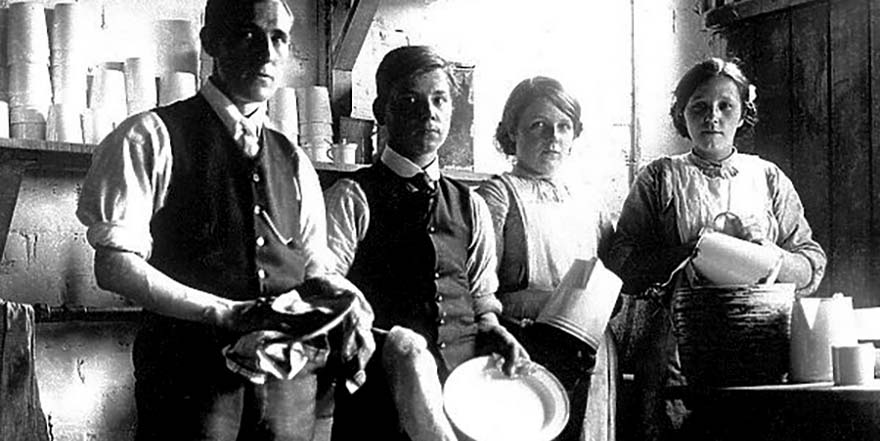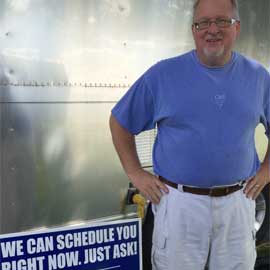
IN OUR OPINION
DAWN IN YOUR RV WASTE TANKS: GOOD IDEA OR BAD?
If there’s one thing that seems controversial in RVing, it’s what to put into your RV’s waste holding tanks. Commercially-available tank additive? The GEO method? Just water? Or even Kleen Tank’s uber-popular make-it-yourself tank solution?
While we’re never about mentioning any tank additive product by name, Dawn Dish Detergent seems to get a lot of mention, even when popular competing and similar brands of dish detergent are used. For the purposes of this article, we’ll just use the term “dish detergent.” Which one you interpret that as is up to you.
Dish detergent is known for its ability to remove grease and other types of stains. It is also effective at removing dirt and grime.
WHAT’S IN DISH DETERGENTS?
Most dish detergents are pretty similar in composition. While not all are the same, the comparison from one brand to another is pretty easy. Here are the primary and main ingredients common in most dish detergents (besides their common first ingredient, water):
Sodium lauryl sulfate. A general term encompassing a number of similar chemicals (sodium laureth sulfate, sodium alkylethersulfate, Lauramine oxide, and ammonium lauryl sulfate), it is a mild surfactant and anionic detergent found in many household products (soaps, shampoos, toothpaste, etc.). Primarily produced from palm kernel or coconut oil, it is a mild sulfuric acid and sodium salt.
It works by emulsifying or solubilizing oils, and suspending soil so that they can be rinsed away. This ingredient contributes foaming properties to cleaning products.
Sodium chloride. Commonly known as simply salt, it is used to help build viscosity, making your dish detergent detergent more thick and less runny. It also helps to stabilize the surfactants in the detergent, ensuring that they maintain their performance over time.
Phenoxyethanol. A preservative common in many household products. It has mild germicidal properties.
Polyethylene glycol or PEI-14 PEG-10/PPG-7 copolymer. This chemical is derived from petroleum. It functions as a lubricant and controls excessive foaming.
Methylisothiazolinone. Used as a biocide (control viruses, bacteria, and fungi through a chemical or biological action) in numerous personal care products and other industrial applications.
IS IT ECO-FRIENDLY?
While many dish detergents claim to be safe for the environment, the jury is still out on the matter. Here are some of the more controversial ingredients to be concerned about:
Methylisothiazolinone. This ingredient, which acts as a preservative is rated as having high concern for “acute aquatic toxicity” which, in simple terms, means it is hazardous to fish and marine life.
Polyethylene glycol or Pei-14 Peg-24/Ppg-16 Copolymer. Used as a cleaning agent, but concerns around this chemical include links to cancer, organ effects, skin irritation, and damage to your vision.
Colorants. There are various ones used, depending on the exact brand, but some of these have concerns regarding effects on the nervous system, skin irritation, and cancer.
IS IT CORROSIVE?
Many “experts” regard dish detergent as largely non-corrosive and safe for materials in your tank, such as tank surfaces, valves, and soft plastic and rubber fittings. Most dish soap contains a significant amount of sulphuric acid. Most formulations have a pH between 9 and 9.5.
OUR OPINION?
RVers use a lot of soap. Washing dishes, taking showers, washing your hands and other body parts. That’s a lot of soap going down into the gray tank (less so the black tank). In our opinion, all that soap can cause build-up and even clog a tank.
A better solution is simply to accept the amount of detergents and soap that normally ends up in the tanks, use plenty of water (follow our guidelines), and, if you wish, use a tank additive that doesn’t break down, dissolve, or liquify the contents of your RV’s waste holding tanks.
After all, your waste tanks are part of a holding system, not a septic system. Adding anything to them that turns them into a septic system is bad, as we know.
Leave the dish detergent next to the galley sink to wash dishes. Dumping large amounts into your waste tanks with the desire to “clean” anything is just wasting money and potentially causing problems.

Jim Tome, Owner
Hi, I'm Jim Tome and, along with my wife, Debbie, the owners of Kleen Tank LLC, the national leader in RV holding tank cleaning service. We've been RVers like you since 2004 and have traveled all over the U.S. in our Airstream travel trailer. We started the business about twelve years ago and have cleaned tens of thousands holding tanks in thousands of RVs. From tiny weekend travel trailers to monstrous fifth wheels to luxurious motorhomes, I've seen just about every situation there is with RV holding tanks and waste systems. I hope you enjoy our articles; I try to post at least one per week and we've got a great library of them to cover just about every problem. Enjoy!
8 Comments
Keep in mind that we may receive commissions when you click our links and make purchases. However, this does not impact our reviews and comparisons. We try our best to keep things fair and balanced, in order to help you make the best choice for you.
MAKE A QUICK INQUIRY
WE'LL GET RIGHT BACK TO YOU
WE'RE HERE FOR YOU
CONNECT WITH US
P.O. Box 313, Sycamore, IL 60178
844-KLEENME (844-553-3663)
info@KleenTank.com
Facebook.com/KleenTank
Instagram.com/KleenTank
WHAT DOES OUR SERVICE DO?
IT'S PRETTY SIMPLE...
Fixes and corrects your RV's tank sensors almost every time.
Features innovative, hydrojetting technology.
Is a 100% mobile service. We come to you at your site.
Is environmentally safe and makes no mess at your site.
Is chemical-free and all-natural.

Can I use Calgon bath beads instead of pearls. I can’t find pearls. Any certain scent? Thanks in advance.
You can, but you’ll find Calgon Bath Pearls to work much better, plus they will not foam up nearly as much as the beads (which is really a powder) when mixing up our tank solution. You can find Calgon Bath Pearls readily available at KleenTank.com/store. They ship out the same day (or, on the weekends, the next business day) and we have plenty in stock!
How do I get the discount that is because of my membership in FMCA?
Simply mention your membership in FMCA to your Kleen Tank dealer or visit KleenTank.com/FMCA. Kleen Tank is very proud of our special and exclusive relationship with the Family Motor Coach Association.
How do you clean tanks when the coach has a macerator? Do you disconnect it to get to a regular hose connector?
Thanks.
Hi Jeff, excellent question. Our dealers have special training to work through or bypass an inline macerator. There are many kinds of macerators and the set up on them varies from model to model, but we have no problem with RVs that have inline macerators.
Hi I just watch a video where you cleaned someone’s tanks. You said adding additives was bad. I just bought my first RV brand new. Tanks never used, so you say just put water in them. My tanks are fresh 21 and gray and black 30. How much water to start?
Hey there, William, thanks for reaching out. I would put 5 to 10 gallons of fresh water in them while you are traveling between home/RV parks (and empty out this clean “traveling water” when you arrive where you can dispose of it), then, start put with about three gallons in each tank as you start camping with your RV (adding our tank solution at this point is an excellent idea). Then, when the tanks are full, empty them, flush them out, then start over: add three gallons of fresh, clean water and oour tank solution (if you desire).